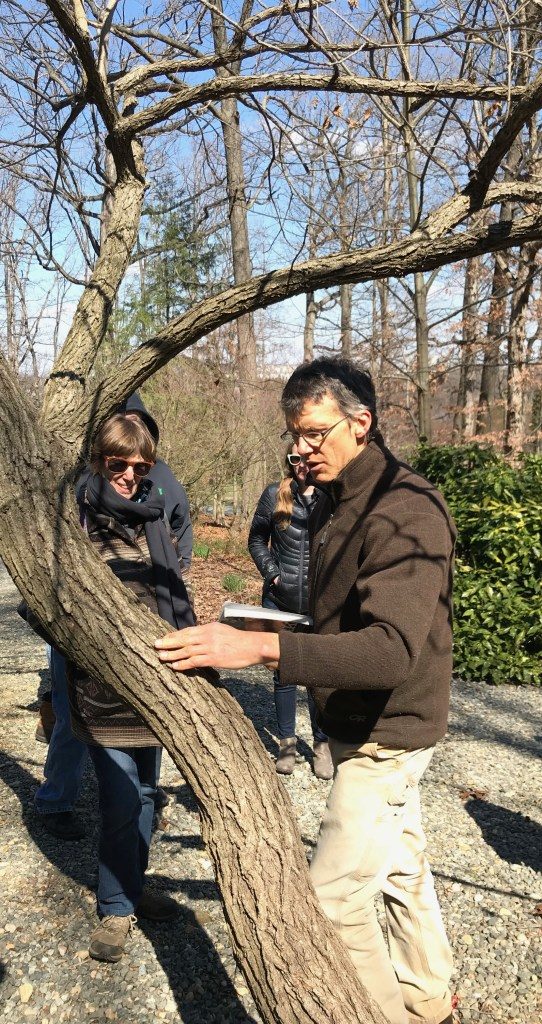
We’re excited to feature a post that was originally published on TreeStewards.org. Without further ado, here’s a stellar recap of our recent Bark Identification class we held earlier in March. Interested in hearing about special events and classes like this? Sign up for updates or become a member today! And you’re in Arlington or Alexandria be sure to check out TreeStewards as they do great work across the Potomac.

Bark tells a lot about a tree. It is key to identifying deciduous trees in winter, when most have lost their leaves and buds may be out of reach or sight. Naturalist Michael Wojtech advocates learning bark as a means of learning trees with the goal of becoming a native with the surrounding woods.
He wrote the book on bark, and last Saturday (March 10), he illustrated the dozens of variations in bark in both slides and a walk with about three dozen tree lovers at the National Arboretum in the District. Casey Trees, the D.C. tree-planting non-profit, invited volunteers and others from the area to experience Wojtech’s straighforward method.
Examine the bark at eye-level. Try not to look up for other clues, such as branching habit or remaining seeds or leaves. Consider where the tree is growing: wet, dry, uphill or lower. Think about the tree’s age: young, mature, old. And then match the patterns you see with about a dozen patterns typical of trees in our area and further northeast. Touch the bark. Is it smooth, tight, peeling, rough, furrowed, scaly, or pocked with lenticels?
All are clues to the species of tree, though when a young or mature tree gets up in years, its bark can change radically. An exercise with photographs of 10 younger trees and photos of them later in life stumped all but three of the groups trying to match them up. As with most worthwhile endeavors, identifying trees by their bark takes lots of practice. So, go to your favorite trees. Get to know them. Give them a gentle pat. You’ll be rewarded with knowledge.
Michael Wojtech’s book, which contains a handy key to identify bark and dozens of photos of bark at various ages, is Bark: A Field Guide to Trees of the Northeast. His website is knowyourtrees.com

